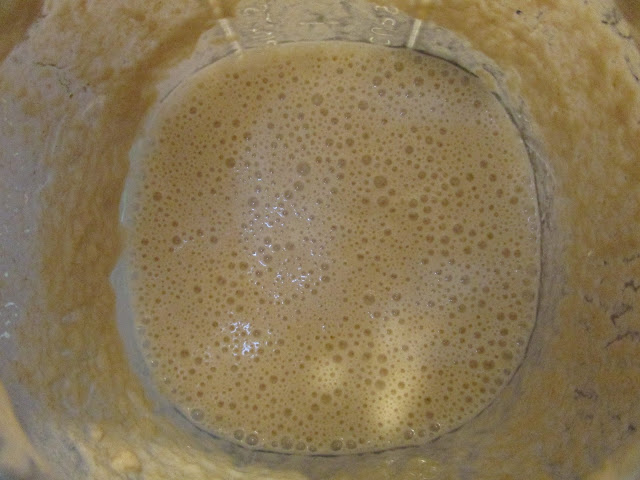Sleep is crucial for
preserving memories in general, but there are different types of memories and
different phases of sleep. Which phases of sleep benefit which types of
memories?
 |
| A young velocipedist on Michaux velocipede, a predecessor to the modern bicycle. Learning to ride this contraption required procedural memory. . A public domain image. Source. |
Procedural memory, memory
of how to do things, like how to ride a bike, has long been suspected to rely
on REM sleep for long-term retention. Here’s some evidence for this hypothesis:
Sleep disruption studies found that lack of REM sleep in study subjects made it
hard for them to perform tasks they just learned. Research on mice revealed
that REM sleep improved the mice’s motor skills, and this improvement caused
visible changes in mouse neurons.[1]
Other researchers thought
Slow Wave Sleep (SWS) also called deep sleep, or N2, another non-REM sleep
stage, were more important for procedural memory. More research is needed to
clear up these conflicting ideas.
 |
| Photo by blog author. Remembering tales from The Freddie Stories by Lynda Barry requires complex declarative memory. |
Disrupting REM sleep also made it hard for research participants to remember stories, which requires complex declarative memory—that is, memory of narratives or complicated facts that can be declared or told. In contrast, the same subjects could easily remember simple facts, which requires simple declarative memory—that is, memory of straight-forward facts that can be stated. This indicates that REM sleep is only involved in complex declarative memory, and that simple declarative memory must be maintained differently, probably during SWS. [2]
 |
| Blog author on beach. I need episodic memory to remember my trip through New England last summer! |
Though REM sleep likely
helps us remember stories, it may not help us remember the stories of our own
lives. Episodic memory, or memory of autobiographical events, needs two
sections of the brain to form and solidify—the hippocampus, and the lateral
prefrontal cortex. Brain activity in the lateral prefrontal cortex decreases
during REM sleep, which means our dreams probably don’t help us remember what
we did the day before.
 |
| The prefrontal cortex is shown in red. A creative commons image. Source. |
 |
| A creative commons image. Source. |
Instead, episodic memory
retention is suspected to rely on SWS. During SWS, connectivity between the
lateral prefrontal cortex and the hippocampus increases, possibly allowing
episodic memories to become permanent.
The connection between the
hippocampus and the lateral prefrontal cortex, suspected in retaining episodic
memories, is highest during the transition between sleep stages. Thus, the
beneficial effects of SWS may only work if this sleep stage proceeds REM sleep.
[3]
 |
| Sixteen faces expressing human emotions. Coloured engraving by J. Pass, 1821, after C. Le Brun. A creative commons image. Source. |
But, if something impactful happened in the course of the day like getting mugged, or giving birth; the emotional aspects of these memories are likely processed during dreaming sleep. Have you ever gone to bed upset and woken up considerably more cheerful? Your emotions likely sorted themselves out during REM sleep. The fact that elements from significant emotional events show up in dreams could be related to the emotional processing occurring
The absurd nature of
dreaming may not just be an entertaining side effect of emotional processing.
Dreams may help the brain pick up on non-obvious patterns for future use.[4]
This idea brings us back to Otto Pöetzl’s study I wrote about in the first post
in this series. To summarize, Pöetzl found that his study subject’s dreams
contained elements of a landscape painting they were briefly shown the day
before, even parts of the painting they didn’t remember right after seeing it.
It’s possible that patterns our brains unconsciously analyze come to light and
are related to the conscious brain during dreaming. More research is needed on
this topic before we really know how this works.[5]
Overall, most sleep
researchers agree that REM sleep is involved in more abstract and generic
memory processing while non-REM sleep works with specific memory functions like
simple declarative memory and episodic memory.
During a normal night’s
sleep we go through all sleep phases, not isolated chunks of just REM sleep or
just SWS like research subjects do during laboratory studies. Most likely all
sleep stages combined are needed to properly process and maintain memories.
Researchers are now examining how the transitions between sleep stages relate
to memory. Even from the preliminary research that’s already been conducted, it
is clear that humans spend one-third of our lives asleep for a reason.
 |
| The Sleeping Gypsy by Henri Rousseau. Photo taken by blog author at the MoMA. |
[1] Li, Ma,
Yang, and W. B. Gan. “REM sleep selectively prunes and maintains new synapses
in development and learning.” Nature Neuroscience, vol. 20, Jan. 2017, pp. 427-437. doi: 10.1038/nn.4479.
[2] Ackermann, and B. Rasch. “Differential
Effects of Non-REM and REM Sleep on Memory Consolidation?” Current Neurology and Neuroscience Reports, vol. 14, 7 Jan. 2014. SpringerLink, doi: 10.1007/s11910-013-0430-8.
[3] Spoormaker, Czisch, and
F.Holsboer. “REM Sleep, Hippocampus, and Memory Processing: Insights from
Functional Neuroimaging Studies.” Behavioral and Brain Sciences, vol. 36, no. 6, Dec. 2013, pp. 629-630. ProQuest, doi: dx.doi.org.ezproxy.cul.columbia.edu/10.1017/S0140525X13001441.
[4] Rasch and J. Born. “In Search of a Role of REM Sleep
in Memory Formation.” Neurobiology
of Learning and Memory, vol. 122, July 2015, pp. 1-3. ScienceDirect, doi, doi.org.ezproxy.cul.columbia.edu/10.1016/j.nlm.2015.04.012.
[5] LeDoux, Joseph. The Emotional Brain: The Mysterious Underpinnings of Emotional Life. Touchstone Books, published by Simon and Schuster, New York, 1998. pp. 59-60.

















